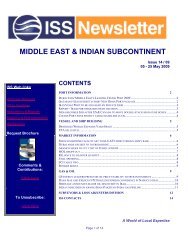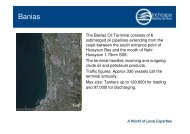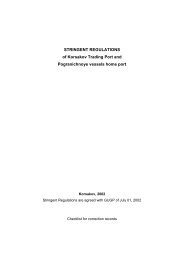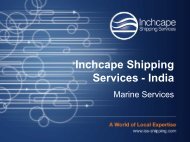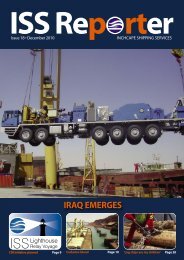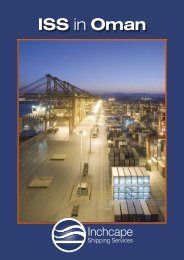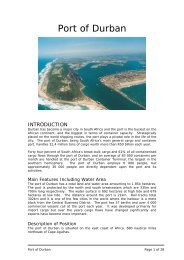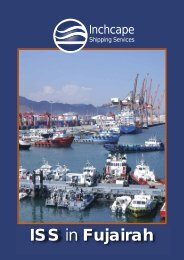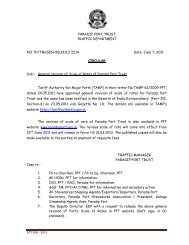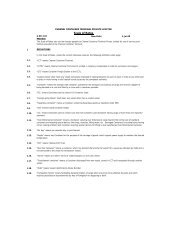Prigorodnoye Export Terminal Port Regulations.pdf - Inchcape ...
Prigorodnoye Export Terminal Port Regulations.pdf - Inchcape ...
Prigorodnoye Export Terminal Port Regulations.pdf - Inchcape ...
Create successful ePaper yourself
Turn your PDF publications into a flip-book with our unique Google optimized e-Paper software.
<strong>Prigorodnoye</strong> <strong>Export</strong> <strong>Terminal</strong> <strong>Port</strong> <strong>Regulations</strong> Rev 01<br />
The tanker should arrive with short distance pieces fitted, if necessary. <strong>Prigorodnoye</strong> LNG<br />
export terminal uses quick connection loading arms so outboard flanges fitted with bolt holes<br />
are not required and suitable flanges for quick coupling connection will be required.<br />
Ship’s loading strainers are to be fitted to the manifold.<br />
LNG tankers will arrive with temporary manifold covers fitted to avoid water/moisture ingress<br />
into the manifold. They will be removed immediately prior to connection of the loading arms.<br />
The manoeuvring and connecting of loading arms will be carried out by the Common Facility<br />
Shift Supervisor who will advise the Responsible Ship’s Officer when the arms have been<br />
connected and secured. The order of connecting will be vapour arm first followed by the liquid<br />
loading arms.<br />
28.5 Pre Loading Meeting<br />
Prior to the opening of the vessel’s manifold valves a ‘Pre loading meeting’ shall be held<br />
onboard the vessel. The attendees of this meeting shall be the Responsible Ship’s Officer for<br />
cargo management or his nominated deputy, the Loading Master, the independent cargo<br />
inspector as required and any other individual with a recognised and legitimate interest in the<br />
loading operation.<br />
The purpose of this meeting is to ensure that all aspects of loading and associated activities<br />
are clearly understood and documented in the required format. The agenda for this meeting<br />
shall include as a minimum for normal loading, but not necessarily be limited to the following:<br />
• Exchange of ship/shore safety information.<br />
• Status of cargo tanks on arrival (temperature and pressure).<br />
• Cool-down procedure.<br />
• Bulk loading procedure.<br />
• De-ballasting.<br />
• Anticipated weather and sea conditions.<br />
• Communications with terminal & stand-by tug.<br />
• Emergency procedures.<br />
• Schedule of operations, start/stop cargo, departure etc.<br />
• ISPS security checks and confirmation of levels observed.<br />
• Sloshing/filling limit implications for membrane LNG vessels, as applicable.<br />
The initial entry into service of new vessels and those vessels arriving ‘warm’ after refit will<br />
require fuller and more detailed discussions than those for normal loading and will in most<br />
cases involve additional participants.<br />
28.6 Pressure Test & Purging of Loading Arms<br />
Once connected, loading arms will be pressure tested with nitrogen to a pressure of 5 bar and<br />
2.5 bar for liquid and vapour arms respectively. A leak test will then be carried out on ship's<br />
manifold flange using a soap solution to ensure the cargo loading arms are leak tight and<br />
ready to load cargo.<br />
The arms will be depressurised by opening the vent at the ship’s manifold and O2 and, if<br />
required, dew point readings may be taken at this vent. The process of pressurising and<br />
0000-S-90-01-P-0207-00-E<br />
Page 53 of 101<br />
BM Code: EP.14.03.01.09



